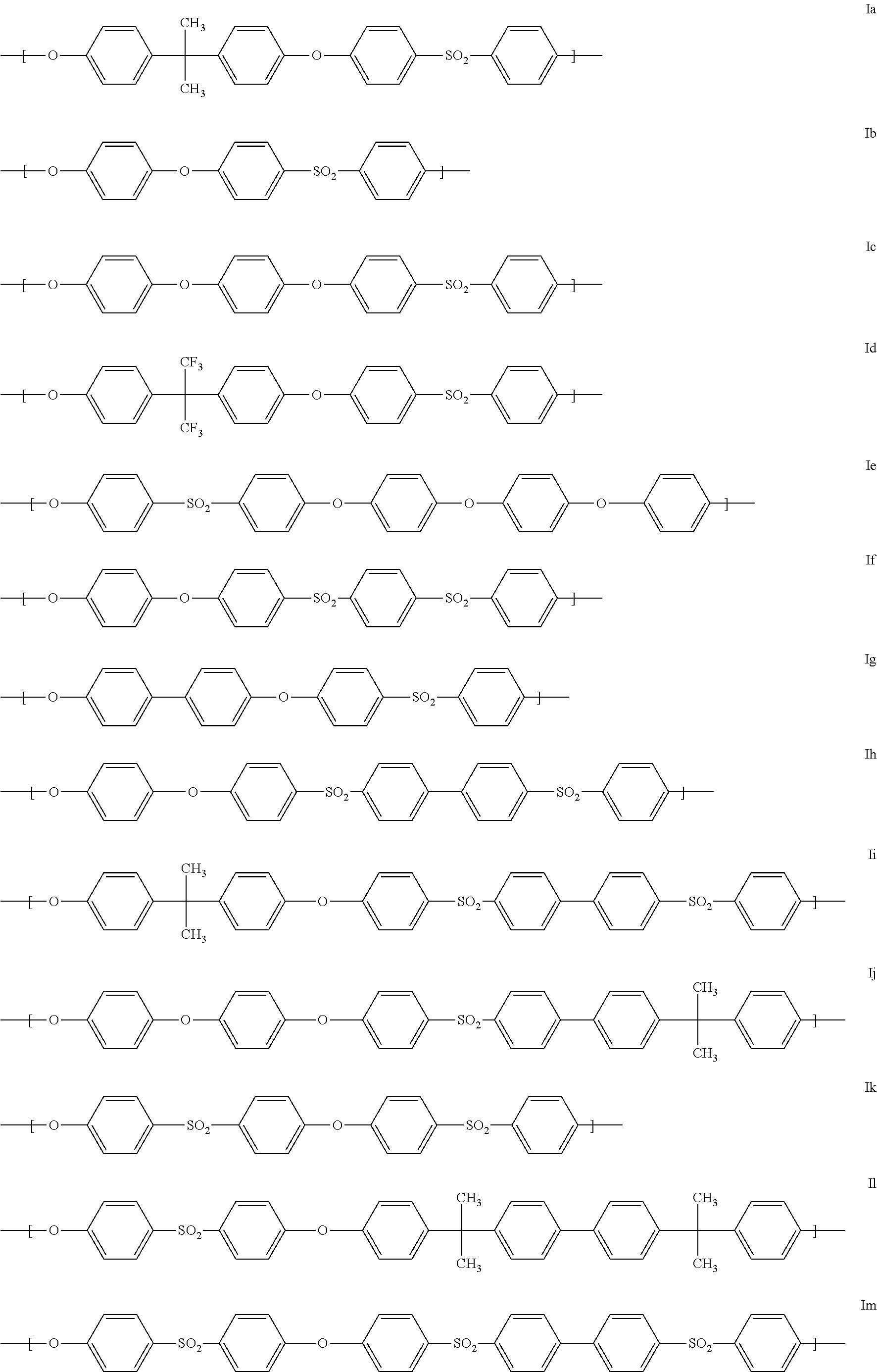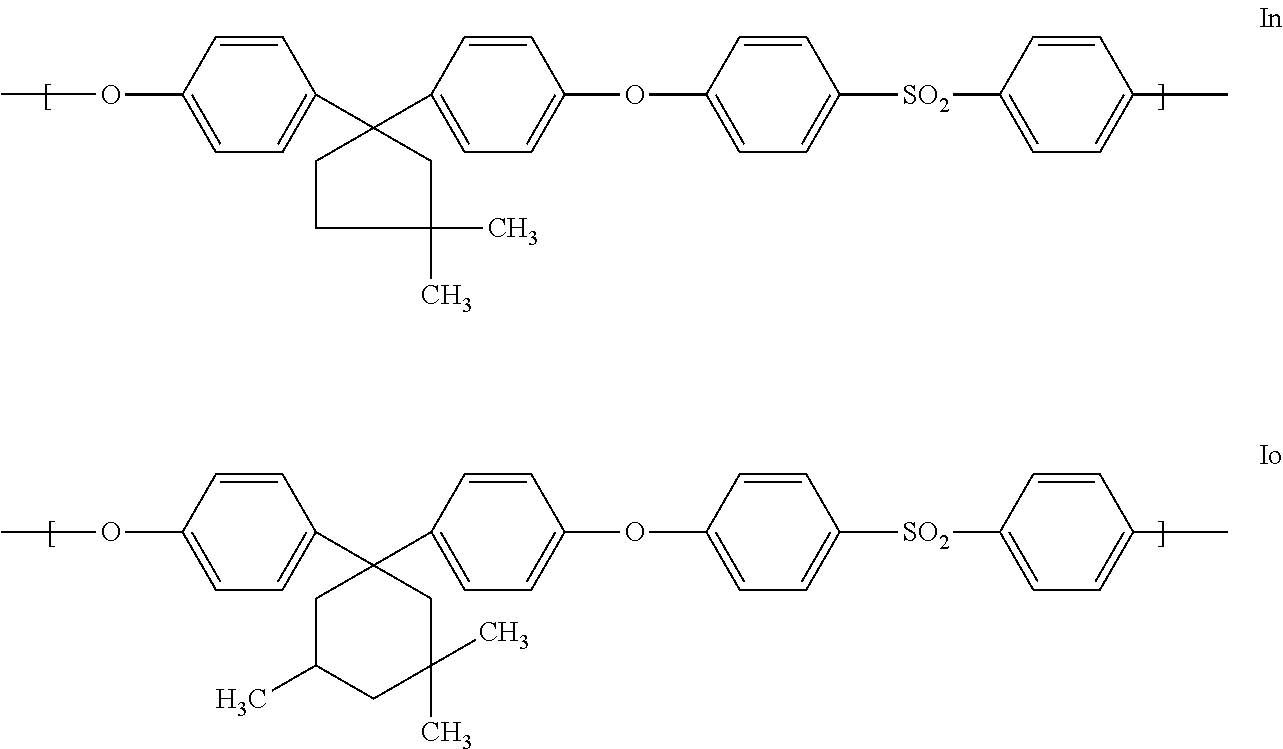Blends of polyarylene ethers and polyarylene sulfides
a technology which is applied in the field of polyarylene ethers and polyarylene sulfides, can solve the problems of high melt viscosity, inadequate resistance to aggressive solvents, and high application requirements, and achieve high impact resistance, high fuel resistance, and good mechanical properties
- Summary
- Abstract
- Description
- Claims
- Application Information
AI Technical Summary
Benefits of technology
Problems solved by technology
Method used
Image
Examples
examples
[0177]The moduli of elasticity, ultimate tensile strength, and tensile strain at break of the specimens were determined on dumbbell specimens in the ISO 527 tensile test.
[0178]The impact resistance of the products was determined on ISO specimens to ISO 179 1 eU.
[0179]Flowability was assessed on the basis of melt viscosity. Melt stability was determined by means of a capillary rheometer. Apparent viscosity at 350° C. was determined here as a function of shear rate in a capillary viscometer (Gottfert Rheograph 2003 capillary viscometer) using a circular capillary of length 30 mm and radius 0.5 mm, an inlet angle of 180° for the nozzle, a diameter of 12 mm for the melt reservoir vessel, and a preheating time of 5 minutes. The values stated were determined at 1000 Hz.
[0180]Resistance to FAM B was determined by placing ISO specimens of dimensions 80×40×4 mm in FAM B at 60° C. for 7 days. The specimens were then allowed to dry in air, and then placed in vacuo at room temperature for 1 day...
PUM
| Property | Measurement | Unit |
|---|---|---|
| boiling point | aaaaa | aaaaa |
| boiling point | aaaaa | aaaaa |
| boiling point | aaaaa | aaaaa |
Abstract
Description
Claims
Application Information
 Login to View More
Login to View More - R&D
- Intellectual Property
- Life Sciences
- Materials
- Tech Scout
- Unparalleled Data Quality
- Higher Quality Content
- 60% Fewer Hallucinations
Browse by: Latest US Patents, China's latest patents, Technical Efficacy Thesaurus, Application Domain, Technology Topic, Popular Technical Reports.
© 2025 PatSnap. All rights reserved.Legal|Privacy policy|Modern Slavery Act Transparency Statement|Sitemap|About US| Contact US: help@patsnap.com



